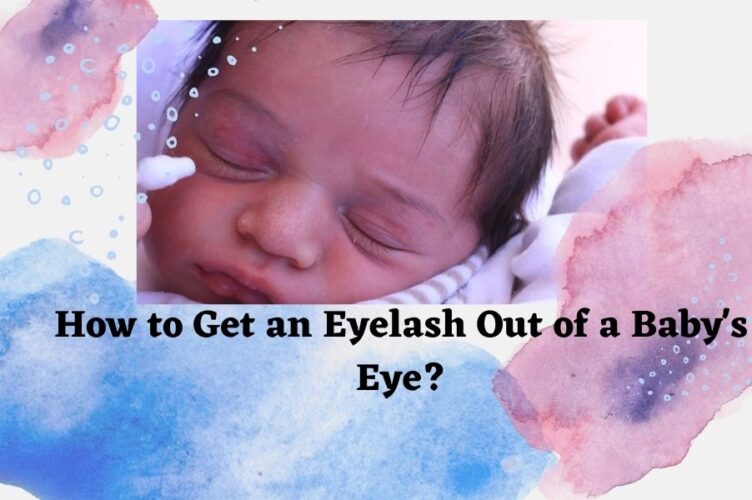Breastmilk is the perfect food for a baby. It helps them grow strong, healthy bodies and minds by providing everything they need- including protection against diarrhea and infection.
When applied to the eyes, breastmilk can help to clear up the infection and soothe irritation. But how often should you put breastmilk in your baby’s eye?

A guide to how often to put breastmilk in baby’s eye?
It depends on the severity of the bacterial eye infections. For mild cases, putting breast milk in the eye 1-2 times per day may be sufficient. You may need to put little breast milk 3-4 times daily for more severe cases.
Read Also: Best pacifier for breastfed babies
How to put breastmilk in baby’s eye?
First, the important thing is to note that you should never put breast milk directly into your child’s eye. Instead, apply a small amount of breast milk to a clean cotton ball or pad and gently wipe it over the affected area.
If you’re searching for a natural way to soothe your child’s eye irritation or clear up an infection, consider using mature milk. Just remember to never put it directly in the eye, and apply it 1-2 (or up to 4 times) per day as needed.
Can Breast Milk Help Pink Eye
For centuries, mothers have been using breast milk to heal their babies. The miracle liquid that can heal all your baby’s ailments and whims! Breast milk contains various ingredients known for centuries as medicines in real life. Do you know how to store breast milk?
These include things like vitamin C, protein & carbohydrates necessary to keep a healthy flow going continuously while providing iron when needed most during those first few months after birth.
But can breast milk help pink eye? Let’s take a look at the evidence.
What is Pink Eye?
Pink eye is an inflammation that can occur when there are too many bacteria in your tears, which also causes swelling around the white part of your eyes and lines inside your eyelids.
A virus or bacteria usually causes it, but allergies or irritants can also cause it. Signs include redness, itchiness, tearing, and a feeling of grittiness in the eye.
Different types of conjunctivitis
There are several different types, which can be classified based on their cause. The most common types include:
- Bacterial conjunctivitis: This type is caused by bacteria and is the most contagious bacterial infection. It can cause watery, pus-like eye discharge, redness, and irritation.
- Viral conjunctivitis: This type is caused by a virus and is highly contagious. Viral infections can cause signs such as watery discharge, redness, and irritation.
- Allergic conjunctivitis: This type is caused by an allergic reaction and is not contagious. The signs are watery discharge and itching.
- Irritant conjunctivitis: This type is caused by irritants such as dust or smoke and is not contagious. It can cause redness and irritation.
Many new parents are unaware of how to use breast milk for eye infections. Let’s explore it.

How Can Breast Milk Help?
There are two ways breast milk can help pink eye: through the antibodies, it contains and its fatty acids. The antibodies in human milk can help fight off the infection causing conjunctivitis. Additionally, the fatty acids in breast milk can help soothe the irritation and inflammation of the eye caused by clogged tear ducts.
Alternatively, you can use antibiotic eye drops as prescribed by doctors in medical treatment to treat blocked tear ducts and viral infections in a child’s eyes.
Recent research published by scientists from the United States suggests breastmilk could be used for pink eye in babies younger than 6 months old. However, some researchers believe this study doesn’t support using a mother’s precious bodily fluids to treat her child’s infection.
How to Use Breast Milk for Pink Eye?
If you want to use breast milk to treat your baby’s pink eye, you can apply it directly to the eye with a clean cloth or by dripping it into the eye with a clean syringe. Be sure to use freshly expressed milk for this purpose, as older milk will be less effective. You should also ensure that your hands are clean before touching your baby or anything that will come into contact with them.
How to treat ear infection with breast milk?
Ear infections are a common occurrence in both adults and children. While they can be painful, several home remedies can help reduce the signs and speed up the healing process. One such remedy is using breast milk to treat an ear infection.
Can breast milk treat ear infections?
Breast milk has anti-inflammatory and antimicrobial properties, making it an effective treatment for ear infections. To use breast milk to treat ear infections, apply a few drops of milk to a clean cotton ball and gently insert it into the affected ear canal. Leave the cotton ball for 5-10 minutes, then remove it and allow the ear to drain. Repeat this process 3-4 times per day until it has resolved.
Conclusion: how to use breast milk for eye infection
If your baby has pink eye, you may wonder if the mother’s milk drops. The answer is yes! this liquid gold contains antibodies to fight off infection and fatty acids to help soothe irritation, clogged tear ducts, and inflammation. You can apply breast milk to your baby’s eyes with a clean cloth or eye drops dropper. Just be sure to use freshly expressed milk and wash your hands thoroughly before touching your baby’s eyes or anything else that will come into contact with them.
Does breast milk help with eye infections in adults?
Evidence suggests that breast milk can help clear up eye infections in adults, although more research is needed to confirm this. One study found that when people with conjunctivitis (an eye inflammation) and ear infections were treated with breast milk, their symptoms improved more quickly than those treated with artificial tears or a placebo.
Other benefits of breast milk for the eyes include its anti-inflammatory and antibacterial properties, which can help to soothe and heal the eye. Additionally, the high levels of antibodies in breast milk can help to fight off infection.
If you are considering using breast milk to treat an eye infection, you must speak to a healthcare professional and ensure it is safe. You should also ensure that the breast milk is from a healthy source and adequately stored.
Parents Also Ask
Does breast milk help blocked tear ducts?
Breast milk may help to clear a clogged tear duct. A small study found that using a syringe to apply breast milk to the affected eye four times a day for five days significantly improved symptoms. However, more extensive and definitive studies are needed to confirm these findings.
How often should I clean newborn sticky eyes?
It would help if you generally cleaned your newborn’s sticky eye(s) as often as necessary to keep them free of discharge. It may be several times a day or even more frequently if your baby has a particularly severe case. Use a cotton ball or swab to clean the area and gently wipe off any remaining discharge.If the discharge is particularly stubborn, you may need to use a warm compress to help loosen it before wiping it away.
Can newborns get pink eye from breastfeeding?
Newborns cannot get pink eye from breastfeeding, but they can develop it if the virus that causes this condition is caught and transmitted through close contact with an infected person or animal.Therefore, practicing good hygiene and avoiding sharing towels, sheets, or other items with someone with pink eye is essential.
What causes yellow discharge in baby eyes?
The most common cause of yellow discharge in baby eyes is conjunctivitis, an inflammation of the membranes that line the eyelids. It can be caused due to a virus, bacteria, or an allergic reaction.


